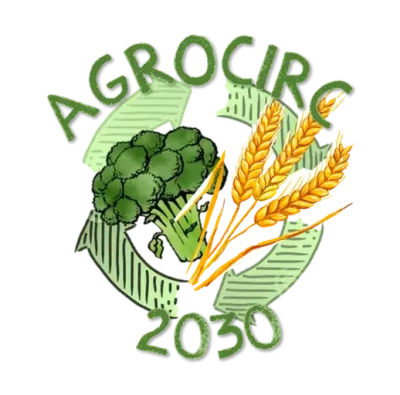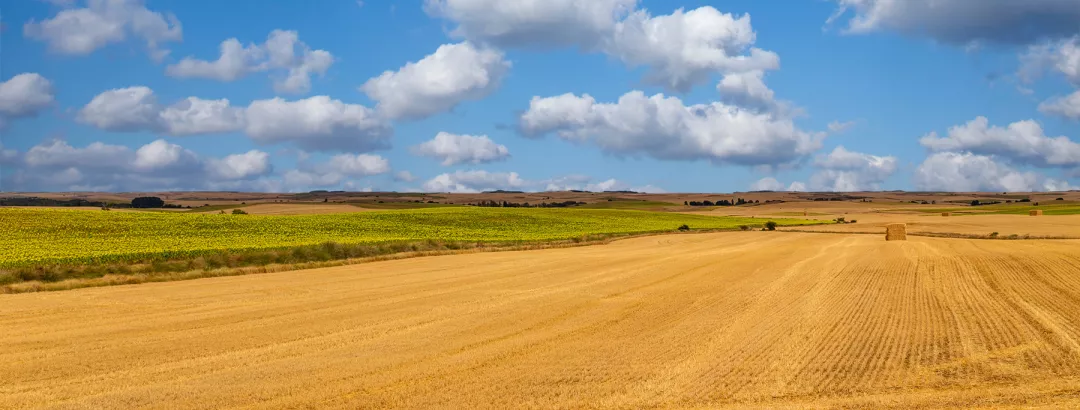General information
RDP Priority
- P5. Resource efficiency and climate
RDP Focus Area
- 5D: Greenhouse gas & ammonia emissions
RDP Measure
- M16: Cooperation
Beneficiary type
- Partnership
Summary
The AGROCIRCULAR 2030 cooperation group consisted of eight organisations from the Autonomous Community of Aragon in Spain. Facing the negative environmental impact caused by the use of plastic in the agri-food industry, the group decided to research and develop suitable solutions that would help eliminate the use of plastic in future. Their project was based on a circular, bioeconomy approach that would help identify viable opportunities for the industry to advance its production methods in food packaging.
The project focused on the development of a range of biodegradable solutions for different uses in the agricultural sector, such as biodegradable containers, isothermal collection or transport boxes, seedbeds, etc. At the core of the project was the intent to revalorise by-products and waste that originate from food production and processing. The project developed a range of different bio-based solutions that were manufactured from 100% plant-based by-products.
Results
- Two new bio-packaging solutions were selected for the manufacture of trays for packaging green beans.
- A waste generation calendar and documentation on the physicochemical and compositional characterisation of the different by-products were created.
- Production of suitable material for subsequent industrial processing.
- Validation of the suitability for use as bio-packaging.
- Shelf-life tests of the bio-packages were successfully carried out.
- An unexpected result was the validation of the composition of the process liquid as a fertiliser.

Promoter
Pyrenean Rice Cooker, SCL
Funding
Total budget: 149 992 (EUR)
RDP contribution: 119 993 (EUR)
Private/own: 29 999 (EUR)
Ressourcen
Documents
AGROCIRC 2030: circular economy through the use of agro-industrial by-products in Aragon
(PDF – 927.55 KB)
Context
The AGROCIRCULAR 2030 cooperation group consisted of eight organisations, including three producers, two food processing organisations, two technology centres and a group of agri-food cooperatives. The producers and processors are located in the three provinces of the Autonomous Community of Aragon in Spain, cultivating and processing cereal, corn and different types of vegetables.
The starting point for this project was, on the one hand, the increase in plastic consumption in the food industry and its strongly negative economic and environmental impact, and, on the other hand, the need for the European agricultural sector to re-think its practices towards applying more sustainable methods, and re-valuing and integrating the benefits of what the ecosystem has on offer.
On this basis, the group started to explore the potential and opportunities of using other raw materials as alternatives to plastic. It was important that the new solutions would be economically viable and environmentally sustainable, such as polymeric materials derived from renewable resources, which can be biodegradable or even compostable.
Due to the large quantity and different types of by-products that could be re-valued and used for the development of biomaterials, the group formed to carry out this project collaboratively.
The partners agreed that the project should focus on by-products for subsequent agricultural use, providing added value and forming part of what has been identified as a new growing opportunity for the sector: the agri-food bioeconomy.
Objectives
The main aim of the project was to address the need for alternatives to plastics used in the packaging of agri-food products, and to respond to the opportunities that an improved management of agri-food by-products could generate. The key purpose was to revalorise and find ways of using by-products for packaging, while eliminating the use of plastics, so that producers could advance and be ahead of standard European requirements.
Another objective of the revalorisation project was to achieve a more efficient management of natural resources and inputs by the beneficiary partners.
Ultimately, the goal of the project was the development of biomaterials that would facilitate - without the consumption of new raw materials - the design of new biodegradable packaging solutions suitable for their use in the food sector.
Activities
The main project activities involved the following key stages.
- Identifying and collecting agro-industrial by-products across the different locations of the project partners in Aragon. In some cases, the by-products were collected directly from the plots where they grew, and in other cases from the processing industries. For example, the producer partners provided rice husks; cereal straw, such as wheat and barley; corn and potato by-products; and derivatives from different forages. Processing partners involved in the production and marketing of frozen vegetables provided by-products generated by their production processes.
- Researching and testing the by-products and developing biodegradable solutions for agri-food use. This activity was carried out by an innovative, start-up company dedicated to environmental sustainability and transformation.
- Developing shelf-life tests and validating the different plant materials of the bio-packaging, as well as characterising the different bio-based materials from agricultural by-products. These activities were carried out by the two technological partners of the project.
Main results
The project was successful in identifying different bio-packaging solutions based on plant by-product waste. The results for their subsequent application in the agri-food sector were encouraging. Specifically, two of the new bio-packaging solutions were selected for the manufacture of trays for packaging green beans. These were tested in 2022 with vegetables from one of the project partners.
The research process produced a number of specific results and validations of the suitability of agri-food by-products in different applications, including:
- A waste generation calendar and documentation on the physicochemical and compositional characterisation of the different types of waste / by-products was developed.
- Detailed research documentation on the processes for each type of waste and classification and selection of the most suitable by-products for their revalorisation was produced.
- Production of suitable material for subsequent industrial processing was accomplished.
- Validation of the suitability for use as bio-packaging was achieved. This included the characterisation of the gas permeability of different materials and the validation of its properties for use as bio-packaging.
- Shelf-life tests of the bio-packages were successfully carried out.
- Unexpected result: Validation of the composition of the process liquid as fertiliser was gained. After agronomic tests, liquid by-products from rice hulls and broccoli gave excellent results in improving the production of chard. Validation of the fertiliser in agronomic trials by fertigation.
Key lessons
- This project demonstrated that bio-packaging solutions could realistically replace plastic equivalents in some applications. Such a product on the market would help introduce new materials from the circular economy and reduce plastic dependency in the agri-food industry.
- Bio-packaging was validated, which generates a new source of raw materials for food packaging, representing a new opportunity for the primary sector.
- For organisations interested in implementing similar projects, it is important to consider the seasonality of different agricultural products when planning to collect the by-products necessary for the development and/or production of bio-packaging.
- It is advantageous to select project partners well, to ensure that all consortium members share the same concerns and interests as the project. This ensures that each partner will take a fair share of the responsibilities when implementing the project.
The companies that came together to create this project started with different concerns: some were focused on waste management, others more on the need to move towards new materials through agricultural by-products, etc. However, we all shared the concern to find solutions to the enormous consumption of plastic.
We are very satisfied with the project, and we think it has a lot of potential for continuity. The great learning has been that circular economy is an opportunity for the sector and to respond to the large amount of waste currently generated by producers, which can generate a plus for them. For the industry, in the medium term, it can be a solution for the replacement of plastic packaging with more sustainable ones.
